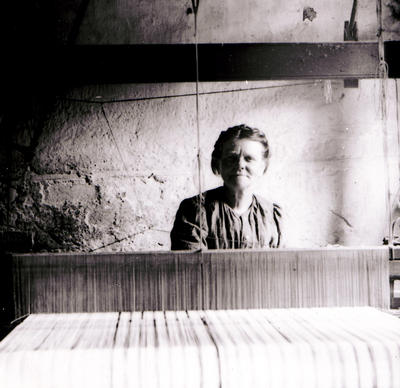
Mrs Betsy Maclachlan, a handloom weaver from Struthers Street in Calton, August 1916.
Handloom weavers were self-employed and worked from home. In the 18th century weaving had been the staple industry in villages such as Govan and Calton but the development of steam-driven powerlooms and the construction of great cotton spinning and weaving factories resulted in a sharp drop in prices. It was estimated that one powerloom could do the work of four handloom weavers, and just one person was required to operate four powerlooms, and so it was inevitable that most handloom weavers (whose weekly income fell from 30 shillings (£1.50) to just 5s 6d (27.5p) between 1806 and 1830) would be unable to continue to earn a living in the trade.
Handlooms continued to be in demand for fine and delicate work until the early 20th century. It remained a poorly paid craft, however, largely in the hands of working-class women and children working from home to supplement the family income.
Reference: 140.78.296
Reproduced with the permission of Glasgow City Council, Glasgow Museums
Keywords:
handloom weavers, handlooms, textile industry, textiles, wages, weavers, weaving, women
You have 0 images in your photo album.